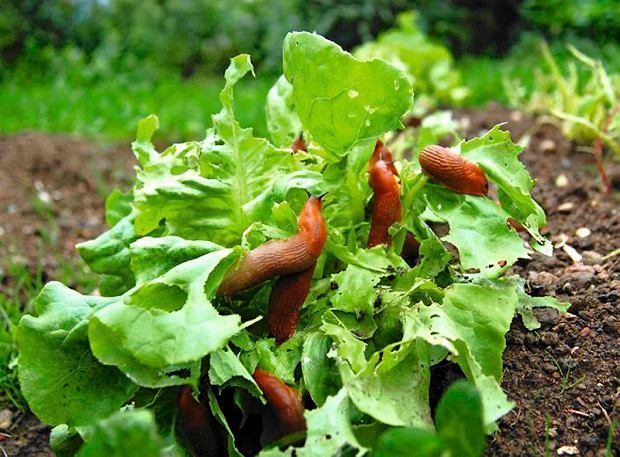 Hardly planted, already eaten: Young plants are a treat for snails. But there are safe and environmentally friendly methods, to protect the shoots.
Hardly planted, already eaten: Young plants are a treat for snails. But there are safe and environmentally friendly methods, to protect the shoots.
Tender lettuce is coveted by slugs. Roman snails, on the other hand, are useful, for they devour the greedy robbers.
When one morning the whole vegetable patch is eaten by snails, even the gentlest gardener gets angry. To deal with the pests, but you have to know, how they live.
Snails overwinter in frost-protected places and leave their quarters in March/April, starving and looking for food. They eat their fill, mate in late summer and lay eggs in fall. Te less burrows. Heaps of leaves or rotten pieces of wood they find as quarters for their eggs. the fewer snails hatch in spring.
But even in summer, snails need moisture, dark places, where they sleep during the day, to forage for food at night. Where the soil is finely crumbly and there are no crevices to sleep in, so don't stop.
A dry summer is dangerous for snails, because they need nocturnal moisture in particular to live and often stay in their hiding places for a long time until the next rain. In order not to attract the nocturnal animals during such periods. you water the garden early in the morning. This is good for the plants, and the ground is dry again by night.
fragrances, don't like the snails
The best protection against snails are bed borders made of fragrant plants. Which of them work reliably, However, this varies from garden to garden and must therefore be tried out.
■ Geeignet sind Salbei, Thymian, Hyssop, garlic and lavender.
■ Das Streumittel Schneckengranulat hält die Tiere ebenfalls mit Duftstoffen ab. The effect
holds (depending on the weather) one to four weeks. Important: Do not confuse the granules with the poisonous slug pellets!